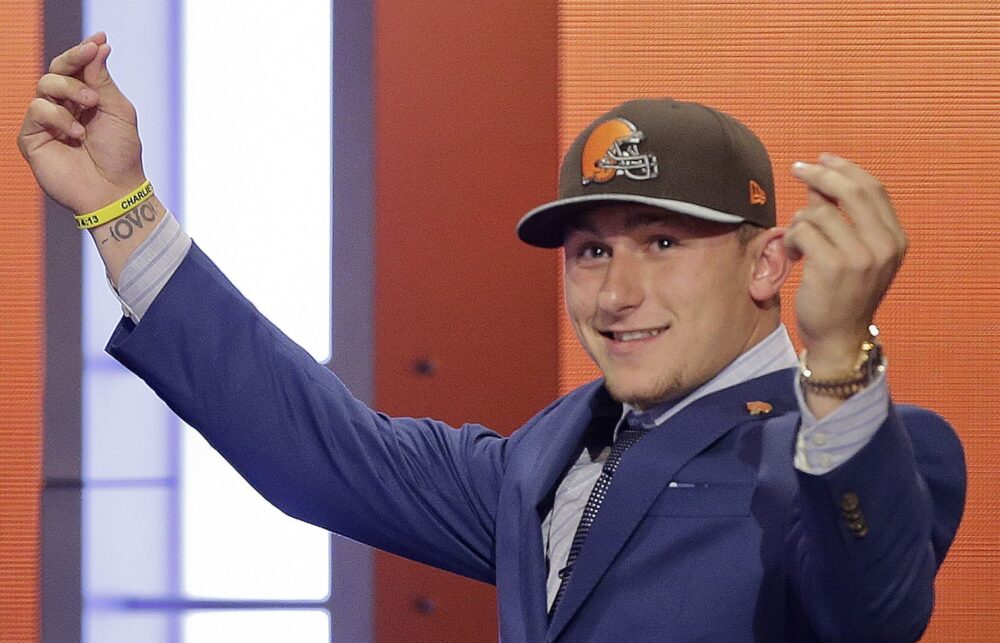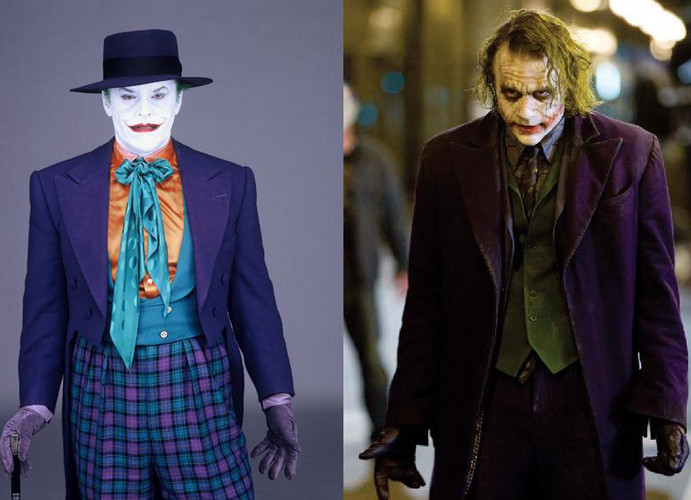Jon Koncak and Joe Kleine (the Jo.K.ers)
THE JOKERS
VS.
THE Jo.K.ers

Synopsis: In a prior post, Jon Koncak and Joe Kleine were identified jointly as the 4th Worst NBA Draft Pick. They earned this distinction for being selected ahead of three Hall of Famers (Chris Mullin, Karl Malone, and Joe Dumars) and four other star players (Detlef Schrempf, Charles Oakley, AC Green, and Terry Porter). Despite this honor, Koncak and Kleine are not on the short list for Top 10 Busts because they were too productive in their careers. Regardless, they provide an interesting side story to the countdown. At the same time, this post also highlights the underwhelming careers of oft-considered busts Keith Lee and Kenny Green.
While I’m not a big fan of combining players as a gimmick for a Top 10 list, Jon Koncak and Joe Kleine are just too connectable.
- But for hair color, they looked the same. In case the photo doesn’t make it obvious, they were both big, slow, and white.
- They were selected with consecutive draft picks in the 1985 Draft. Specifically, Koncak went 5th overall to the Atlanta Hawks while Kleine went 6th overall to the Sacramento Kings.
- They had similar careers. Within 0.3 points, 0.4 rebounds, and 0.2 assists, they both averaged 4.5 points, 4.5 rebounds, and 0.8 assists per game over their 10+ year careers.
- The first two letters of their first names (Jo) and the first letter of their last names (K) are the same. As such, they jointly can be referred to as The Jo. Kers. Isn’t that cute?

In a previous post, Koncak and Kleine jointly were declared the #4 Worst NBA Draft Pick. As a reminder, that countdown was based purely on the quality of players who could have been taken but were passed over instead. As the 5th and 6th overall picks in the 1985 Draft, the Jo.K.ers were selected ahead of three Hall of Famers (#7 – Chris Mullin, #13 – Karl Malone, and #18 – Joe Dumars) and four other star players (#8 – Detlef Schrempf, #9 – Charles Oakley, #23 – AC Green, and #24 – Terry Porter). Despite the declaration that both Koncak and Kleine were really bad draft picks, each one was productive enough to avoid being declared a Top 10 Bust.
The following table compares Koncak and Kleine (two disappointments from the 1985 Draft) with Sam Bowie and Mel Turpin (two disappointments from the 1984 Draft).
NBA STATS FOR SELECTED PLAYERS FROM THE 1984 AND 1985 DRAFTS
| Draft Yr, Pick | Team | Player | Games | Points | Rebounds | Assists | PPG | RPG | APG |
Win Shares |
|
1984, #2 |
POR | Sam Bowie | 511 | 5,564 | 3,845 | 1,075 | 10.9 | 7.5 | 2.1 | 26.9 |
| 1984, #6 | WAS | Mel Turpin | 361 | 3,071 | 1,655 | 183 | 8.5 | 4.6 | 0.5 |
13.7 |
|
1985, #5 |
ATL | Jon Koncak | 784 | 3,520 | 3,856 | 785 | 4.5 | 4.9 | 1.0 | 29.2 |
| 1985, #6 | SAC | Joe Kleine | 965 | 4,666 | 3,991 | 622 | 4.8 | 4.1 | 0.6 |
19.1 |
This table results in a couple observations.
- For as bad as Sam Bowie is supposed to have been, he was substantially better than each of these other players. Specifically, Bowie amassed almost as many rebounds and had significantly more points and assists than Koncak or Kleine in far fewer games. Clearly, Bowie’s reputation is based purely on the fact that he was drafted ahead of Jordan and not based on his own production.
- Since 1970, more than 40 players taken with a 2nd-5th overall pick have been less productive than Bowie or Koncak. With respect to 6th-10th overall picks, approximately 5o have been less productive than Turpin while 75 have been less productive than Kleine. All four were disappointing, but there are too many bigger disappointments for any of them to be considered a Top 10 Bust. In addition, Turpin and Kleine would be considered median picks if taken between 11-14 while Bowie and Koncak would be median picks if taken between 6-10. Again, they were disappointments but not all-time busts.
As the following table shows, the 1985 Draft was very deep.
NBA STATS FOR NOTABLE PLAYERS FROM THE 1985 DRAFT
|
Draft Pick |
Team | Player | Games | Points | Rebounds | Assists | PPG | RPG | APG | Win Shares |
| #1 | NYK | Patrick Ewing | 1,183 | 24,815 | 11,607 | 2,215 | 21.0 | 9.8 | 1.9 |
126.4 |
|
#2 |
IND | Wayman Tisdale | 840 | 12,878 | 5,117 | 1,077 | 15.3 | 6.1 | 1.3 | 45.7 |
| #3 | LAC | Benoit Benjamin | 807 | 9,223 | 6,063 | 1,070 | 11.4 | 7.5 | 1.3 |
32.7 |
|
#4 |
SEA | Xavier McDaniel | 870 | 13,606 | 5,313 | 1,775 | 15.6 | 6.1 | 2.0 | 47.8 |
| #5 | ATL | Jon Koncak | 784 | 3,520 | 3,856 | 785 | 4.5 | 4.9 | 1.0 |
29.2 |
|
#6 |
SAC | Joe Kleine | 965 | 4,666 | 3,991 | 622 | 4.8 | 4.1 | 0.6 | 19.1 |
|
#7 |
GSW |
Chris Mullin | 986 | 17,911 | 4,034 | 3,450 | 18.2 | 4.1 | 3.5 | 93.1 |
| #8 | DAL | Detlef Schrempf | 1,136 | 15,761 | 7,023 | 3,833 | 13.9 | 6.2 | 3.4 |
109.5 |
|
#9 |
CLE | Charles Oakley | 1,282 | 12,417 | 12,205 | 3,217 | 9.7 | 9.5 | 2.5 | 89.7 |
| #10 | PHO | Ed Pinckney | 793 | 5,378 | 3,952 | 727 | 6.8 | 5.0 | 0.9 |
42.7 |
| #11 | CHI | Keith Lee | 182 | 1,114 | 861 | 178 | 6.1 | 4.7 | 1.0 |
3.7 |
|
#12 |
WSB | Kenny Green | 60 | 265 | 101 | 16 | 4.4 | 1.7 | 0.3 | -0.3 |
| #13 |
UTA |
Karl Malone | 1,476 | 36,928 |
14,968 |
5,248 |
25.0 | 10.1 | 3.6 |
234.6 |
|
#18 |
DET |
Joe Dumars |
1,018 |
16,401 | 2,203 | 4,612 | 16.1 | 2.2 |
4.5 |
86.2 |
|
#23 |
LAL | A.C. Green | 1,278 | 12,331 | 9,473 | 1,400 | 9.6 | 7.4 | 1.1 | 99.5 |
| #24 | POR | Terry Porter | 1,274 | 15,586 | 3,872 | 7,160 | 12.2 | 3.0 | 5.6 |
110.4 |
Since there are a lot of numbers in the previous table that you probably skimmed over, it might help to pull back and offer the following takeaways.
- With four Hall of Famers (Ewing, Mullin, Malone, and Dumars), the 1985 Draft was one of the best ever. The only comparable drafts since 1970 include the 1984 Draft (Olajuwon, Jordan, Barkley, and Stockton), the 2003 Draft (LeBron, Carmelo, Wade, and Bosh), and the 1996 Draft (Iverson, Ray Allen, Kobe, and Nash).
- Two players from the 1985 Draft are the all-time leaders in win shares for their respective draft subsets. Karl Malone’s 235 win shares are the most for any player taken 11th-14th overall, while Terry Porter’s 110 win shares are the most for any player taken with a 22nd pick or later.
- Whereas Joe Dumars and A.C. Green each won two NBA Championships, the others (e.g. Ewing, Malone, and Porter) weren’t so lucky.
- Keith Lee (at #11) and Kenny Green (#12) were unproductive enough to qualify as Top 10 Busts. In addition, they were drafted immediately before Karl Malone so the disappointment surrounding their selections was amplified. In hindsight, Malone clearly should have been drafted ahead of both of them, but it may be useful to consider the information available at the time.
KEITH LEE (MEMPHIS STATE)

| Shooting % | Per Game Averages | ||||||
| Season | Games | 2P | FT | Rebounds | Steals | Blocks |
Points |
|
1981-82 |
29 | 53.8% | 75.3% | 11.0 | 1.0 | 3.5 | 18.3 |
| 1982-83 | 31 | 50.2% | 82.0% | 10.8 | 1.0 | 3.1 |
18.7 |
|
1983-84 |
33 | 54.1% | 77.5% | 10.8 | 0.8 | 2.3 | 18.4 |
| 1984-85 | 35 | 49.6% | 78.0% | 9.2 | 0.7 | 1.3 |
19.7 |
|
Career |
123 | 51.8% | 78.2% | 10.4 | 0.8 | 2.5 |
18.8 |
Additional information:
- 2nd Team All American in 1983-84
- 1st Team All-American in 1982-83 and 1984-85
- 1985 Metro Conference Player of the Year
- Final Four Appearance in 1985 (the one with Memphis State and 3 Big East Teams – Villanova, Georgetown and St. Johns)
KENNY GREEN (WAKE FOREST)

| Shooting % | Per Game Averages | ||||||
| Season | Games | 2P | FT | Rebounds | Steals | Blocks |
Points |
|
1982-83 |
25 | 55.4% | 63.1% | 4.4 | 0.4 | 0.6 | 9.0 |
| 1983-84 | 31 | 57.7% | 69.1% |
6.8 |
0.7 | 1.0 |
17.8 |
|
1984-85 |
28 | 50.5% | 64.5% | 8.3 | 0.8 | 1.6 | 17.0 |
| Career | 84 | 54.3% | 66.2% | 6.6 | 0.6 | 1.1 |
14.9 |
KARL MALONE (LOUISIANA TECH)

| Shooting % | Per Game Averages | ||||||
| Season | Games | 2P | FT | Rebounds | Assists | Steals |
Points |
|
1982-83 |
28 | 58.2% | 62.3% | 10.3 | 0.4 | 1.9 | 20.9 |
| 1983-84 | 32 | 57.6% | 68.2% | 8.8 | 1.3 | 1.6 |
18.8 |
|
1984-85 |
32 | 54.1% | 57.1% | 9.0 | 2.3 | 1.5 | 16.5 |
| Career | 92 | 56.6% | 63.1% | 9.3 | 1.4 | 1.6 |
18.7 |
Additional Information:
- Played in the Southland Conference
Simply based on the college statistics of the three players (i.e. without looking at any tape), the draft order of Lee, Green, and Malone doesn’t seem so surprising. As a three-time All-American (2x 1st Team and 1x 2nd Team) who averaged 19 points and 10 rebounds per game, Lee was the most accomplished player in the group. While the selection of Green over Malone is not as clear cut, it was understandable. They both had similar numbers during the 1984-85 season (17.0 ppg and 8.3 rpg for Green and 16.5 ppg and 9.0 rpg for Malone) but Green’s performance had improved over time whereas Malone’s had declined. In addition, Green played in the ACC whereas Malone played in the Southland Conference.
Since Lee and Green were both drafted outside of the first ten overall picks, they are exempt from being declared Top 10 Busts. Furthermore, Lee’s career was cut short by chronic foot problems so he would have qualified for an injury exemption anyway. While they were bad draft picks because they were taken before Malone, the Jo.K.ers were much worse because they also were taken before Mullin, Schrempf and Oakley.





One thought on “Jon Koncak and Joe Kleine (the Jo.K.ers)”
Comments are closed.